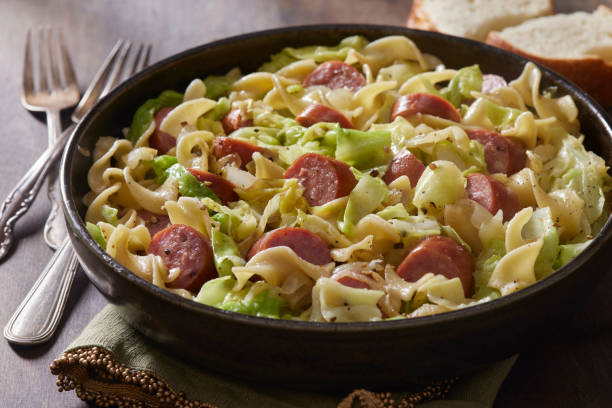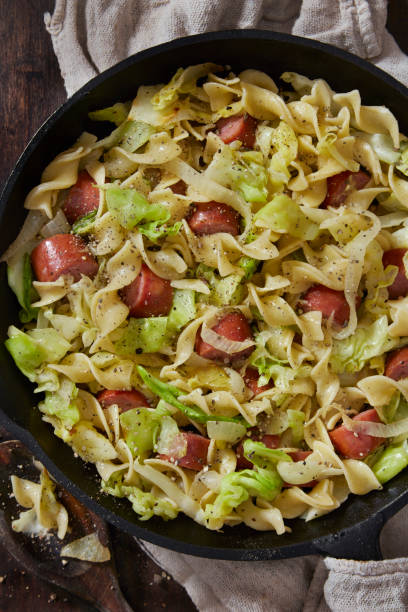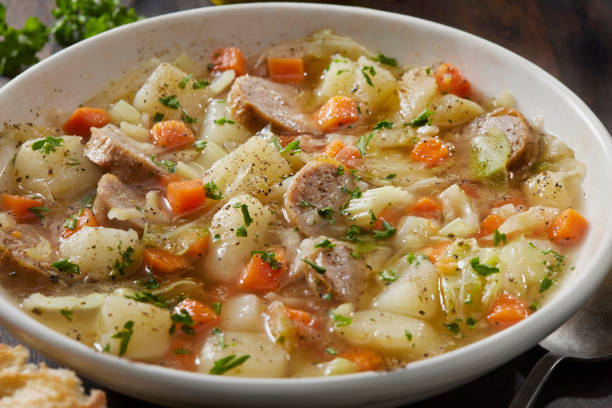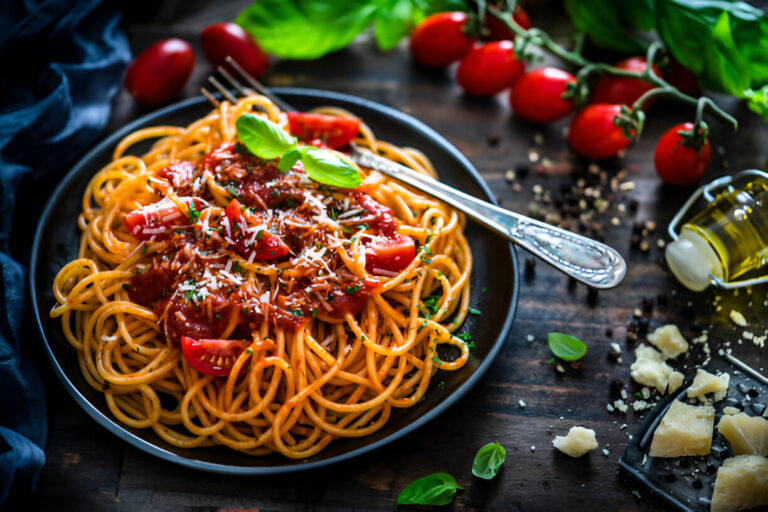Cabbage and Kielbasa: A Delicious Recipe & Nutritional Guide
Cabbage and kielbasa is a dish that embodies comfort and tradition, weaving together the robust flavors of savory sausage and the wholesome crunch of cabbage. This pairing is not just a culinary delight; it has cultural significance in numerous cuisines, particularly in Eastern European households, where family recipes are passed down through generations. The marriage of these two ingredients has made them a staple in many homes, celebrated for their ability to create hearty, satisfying meals that bring people together.
In addition to its rich cultural background, the combination of cabbage and kielbasa boasts widespread popularity due to its versatility and ease of preparation. Whether enjoyed in a cozy winter stew or a summertime grill, this dish adapts beautifully to various cooking styles and preferences. Cabbage offers a range of nutritional benefits, while kielbasa provides a satisfying protein punch. Together, they create a meal that is both delicious and nourishing.
This article will explore the fantastic world of cabbage and kielbasa, examining the nutritional benefits of each ingredient, a detailed recipe to guide you in preparing this classic dish, and answers to frequently asked questions that may arise during your cooking adventure. Join us as we celebrate this timeless dish that connects flavor, nutrition, and tradition in every bite.

Section 1: Understanding Cabbage and Kielbasa
1.1 What is Cabbage?
Cabbage is a leafy green vegetable that belongs to the Brassica family, which also includes broccoli, cauliflower, and Brussels sprouts. There are several types of cabbage, each with its unique flavor and texture:
- Green Cabbage: The most common variety, known for its crisp texture and slightly peppery taste.
- Red Cabbage: Characterized by its vibrant color and slightly sweeter flavor, often used in salads and pickling.
- Savoy Cabbage: This type has crinkled leaves and a milder taste, making it great for sautéing.
- Napa Cabbage: Often used in Asian cuisine, it has a softer texture and a sweet, mild flavor.
From a nutritional perspective, cabbage is low in calories and a rich source of vitamins C and K, as well as fiber and various antioxidants. Its high fiber content can aid digestion, while the antioxidants help combat oxidative stress, promoting overall health and wellness.
1.2 What is Kielbasa?
Kielbasa, the Polish word for “sausage,” refers to a variety of sausages that have roots in Eastern European cuisine. Traditionally made from pork, kielbasa can also be crafted from beef, turkey, or chicken, often seasoned with garlic and a blend of spices. There are multiple types of kielbasa, including:
- Smoked Kielbasa: Known for its robust flavor and distinctive smoky aroma, making it a favorite for grilling and stews.
- Fresh Kielbasa: This type is typically uncooked and has a milder taste, perfect for frying or boiling.
- Garlic Kielbasa: Infused with garlic, offering a delightful burst of flavor.
Nutritionally, kielbasa is a good source of protein, but it can be high in sodium and fat, making it essential to enjoy in moderation. Its versatility in various dishes makes it a popular choice, whether grilled, sautéed, or added to soups and casseroles.
Section 2: The Perfect Pair – Cabbage and Kielbasa
2.1 Flavor Profile
The duo of cabbage and kielbasa creates a delightful flavor profile that harmonizes savory, smoky, and crunchy elements. The rich, hearty taste of kielbasa enhances the earthy, slightly sweet notes of cabbage, while the contrasting textures—a tender, succulent sausage alongside crisp, crunchy leaves—make each bite interesting and satisfying. This combination is not only pleasurable to the palate but also offers a comforting sense of nostalgia, evoking memories of family gatherings and home-cooked meals.
2.2 Popular Cooking Methods
Cabbage and kielbasa can be prepared using a variety of cooking methods, each lending its unique flair to the dish:
- Sautéing: This quick cooking technique helps to achieve a caramelized exterior on the kielbasa while ensuring the cabbage retains some crunch.
- Braising: This method involves slow-cooking the ingredients in liquid, allowing the flavors to meld beautifully while the cabbage becomes tender and flavorful.
- Roasting: Roasting adds a delicious depth of flavor, as the high heat caramelizes the natural sugars in both the cabbage and kielbasa.
- Grilling: A popular method during summer, grilling adds a smoky depth to the kielbasa while lightly charring the cabbage, enhancing its flavor.
Each cooking method offers a distinct taste experience, making it easy to adapt cabbage and kielbasa to suit any occasion and preference.

Section 3: Nutritional Benefits of the Dish
3.1 Health Benefits of Cabbage and Kielbasa
The combination of cabbage and kielbasa offers a range of nutritional benefits that can enhance a balanced diet. Cabbage, as previously mentioned, is low in calories and high in essential vitamins, particularly vitamin C, which supports immune function and skin health. Additionally, its fiber content aids in digestion and helps maintain gut health. The antioxidants found in cabbage can also contribute to reducing inflammation and preventing chronic diseases.
On the other hand, kielbasa serves as a protein source, which is vital for muscle repair and overall body function. While it’s important to be mindful of the sodium content in kielbasa, enjoying it in moderation can fit within a healthy eating plan. To balance the meal, consider pairing cabbage and kielbasa with whole grains or legumes, which can provide additional fiber and nutrients.
3.2 Dietary Considerations
For those with specific dietary needs, there are options for enjoying this dish while accommodating different preferences. Cabbage and kielbasa can be easily modified for gluten-free diets by choosing gluten-free sausages or replacing traditional bread sides with gluten-free alternatives.
Additionally, if you’re looking for ways to reduce fat content, consider substituting kielbasa with leaner protein options such as turkey kielbasa or plant-based sausages. This allows you to enjoy the flavors of the dish while making it more heart-healthy. Incorporating more vegetables into the dish can also increase fiber and nutrient intake, making it a more balanced meal.
Section 4: A Detailed Recipe for Cabbage and Kielbasa
4.1 Ingredients
For 4 servings, you will need:
- 1 medium head of cabbage
- 1 pound of kielbasa sausage
- 1 onion
- 2 tablespoons olive oil
- 3 cloves of garlic
- 1 teaspoon caraway seeds (optional)
- Salt and pepper to taste
- 1 cup of chicken broth or water
4.2 Directions
- Begin by preparing the ingredients: chop the cabbage, slice the sausage, and dice the onion.
- In a large skillet or pot, heat the olive oil over medium heat. Add the chopped onion and sauté until translucent.
- Add the minced garlic and sliced kielbasa to the pan, cooking until the sausage is browned and heated through.
- Stir in the chopped cabbage and, if using, the caraway seeds. Mix well to combine the flavors.
- Pour in the chicken broth or water, and season with salt and pepper to taste. Stir again to ensure all ingredients are well mixed.
- Cover the skillet or pot and let it cook for 20-30 minutes, stirring occasionally, until the cabbage is tender and the flavors have melded.
4.3 Cooking Tips and Variations
To customize your dish, consider adding spices such as paprika or mustard seeds for an extra kick. You can also introduce vegetables like diced potatoes or carrots for added texture and flavor.
If you’re looking for a vegetarian option, substitute traditional kielbasa with plant-based sausage or tofu, ensuring that you maintain the heartiness of the dish without the meat proteins. Feel free to experiment with the recipe by incorporating your favorite seasonings or herbs to make it your own.
Section 5: Serving Suggestions and Pairings
5.1 Ideal Side Dishes
Cabbage and kielbasa can be complemented beautifully by simple side dishes. Consider serving it with crusty bread or sourdough to soak up the flavors of the dish. A fresh salad can also add a refreshing contrast, bringing brightness and crunch to the meal.
5.2 Beverage Pairing
When it comes to beverages, consider pairing your meal with a cold beer, crisp cider, or a light white wine. These options can enhance the flavors of the dish, making for a delightful dining experience.
Section 6: Frequently Asked Questions (FAQ)
6.1 Can I use different sausages besides kielbasa?
Absolutely! While kielbasa is traditional, you can experiment with other types of sausages, such as bratwurst, turkey sausage, or even vegan options, depending on your dietary preferences.
6.2 How can I store leftovers properly?
To store leftovers, place them in an airtight container and refrigerate them. The dish should be consumed within 3-4 days. For longer storage, consider freezing it in portion-sized containers.
6.3 Is this dish freezer-friendly?
Yes, cabbage and kielbasa can be frozen. Allow the dish to cool completely before transferring it to a freezer-safe container. It can be stored in the freezer for up to 3 months. When ready to enjoy, thaw in the refrigerator overnight and reheat on the stovetop or in the microwave.
6.4 Can I make this recipe in a slow cooker?
Yes! To prepare this dish in a slow cooker, simply add all the ingredients to the slow cooker and cook on low for 6-8 hours or high for 3-4 hours until the cabbage is tender and the flavors are well combined.
6.5 What are some gluten-free alternatives for kielbasa?
For gluten-free options, look for gluten-free sausage brands available at your local grocery store. Many specialty stores also carry gluten-free kielbasa alternatives made from turkey or plant-based ingredients.
Conclusion
Cabbage and kielbasa represent a wonderful fusion of flavors and culinary traditions. By exploring this dish, we see how simple ingredients converge to create a timeless favorite. Whether you’re enjoying it for a family dinner or trying it for the first time, the blend of textures and flavors is sure to satisfy. We encourage you to try the recipe and make it your own, incorporating personal touches and variations to enhance your culinary experience.
References
Relevant sources for nutritional information and recipe variations include nutrition databases and culinary resources.

cabbage and kielbasa
Equipment
- 1 large skillet or frying pan
- 1 wooden spoon or spatula
- 1 chef's knife
- 1 cutting board
Ingredients
- 1 medium head green cabbage, chopped About 2-3 pounds.
- 14 ounces kielbasa sausage, sliced
- 1 medium onion, diced
- 2 cloves garlic, minced
- 2 tablespoons olive oil
- 1 teaspoon paprika
- 1/2 teaspoon black pepper
- 1 teaspoon salt Adjust to taste.
- 1/4 teaspoon red pepper flakes Optional, for heat.
- 1/4 cup chicken broth or water For steaming.
- to taste fresh parsley, chopped For garnish.
Instructions
- Begin by heating the olive oil in a large skillet over medium heat.
- Add the diced onion to the skillet and sauté for about 3-4 minutes, or until translucent.
- Stir in the minced garlic, cooking for an additional 1 minute until fragrant.
- Add the sliced kielbasa to the skillet and cook, stirring occasionally, for about 5 minutes until browned.
- Incorporate the chopped cabbage, salt, paprika, black pepper, and red pepper flakes (if using) and stir well to combine all ingredients.
- Pour in the chicken broth or water, cover the skillet, and cook for about 10-15 minutes, stirring occasionally until the cabbage is tender.
- Remove from heat, garnish with fresh parsley, and serve hot.







